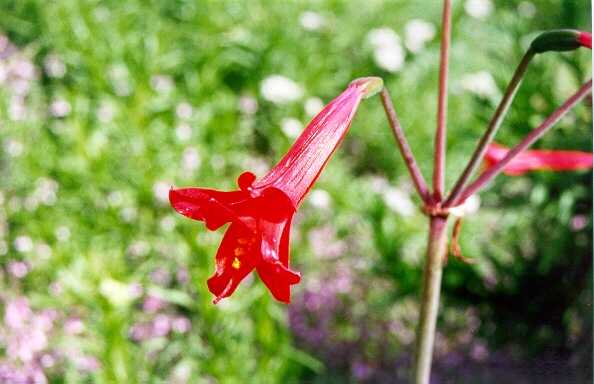 |
Rhodophiala phycelloides ("Añañuca") An attractive but solitary flower that seldom grows in large groups. |
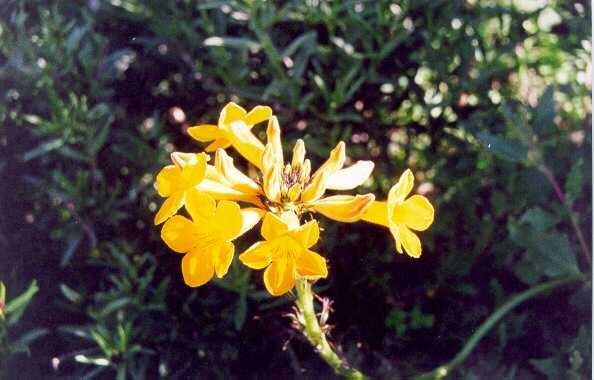 |
Argylia Radiata (Cartucho) - Yellow - the most common cartucho |
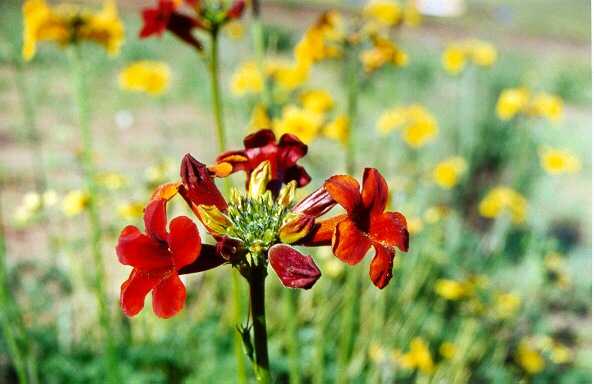 |
Argylia Radiata (Cartucho) - The rarer brown variant |
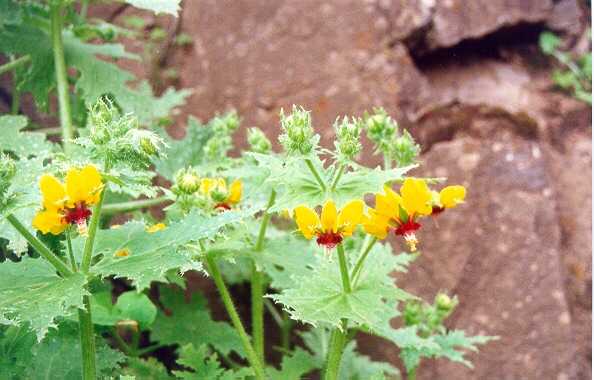 |
Loasa tricolor ("Hortiga"- Chilean Stinging Nettles) - This is a vicious plant with a nasty poison. Anyone who hikes in Chile should know what it is and no one with any brains walks through a field of this stuff twice with shorts on! The pain is quite disagreeable and lasts for about half an hour. But still, it has a lovely flower, little appreciated by Chileans (for good reason!). If you look closely, you can see the little sacs of poison glinting on the leaves. |
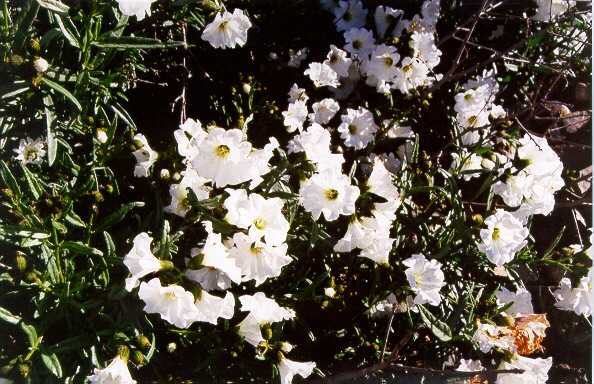 |
Cordia decandra ("Carbonillo") In the mountains near Cerro Tololo, one of the main large plants is this bush, which most of the time is dried out and looks like a dead bush a couple of meters high, with few if any leaves on it. It is so dry and lifeless during this period that the campesinos call it a "charcoal bush" and burn it as firewood. Yet, when the rains come, these apparently lifeless plants become completely covered with flowers and people ask where the bushes were a month ago! |
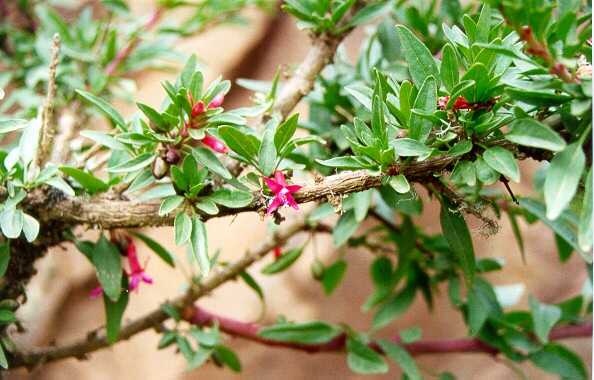 |
Fuchsia lycioides ("Palo de Yegua") The fuchsias are a genus which is primarily endemic to Central and South America. Most of the domesticated fuchsias are said to come from Chilean origins. This plant looks like a dead stick most of the time. When it suddenly comes to life it becomes covered with leaves and tiny fuchsias 1-2 cm long. |
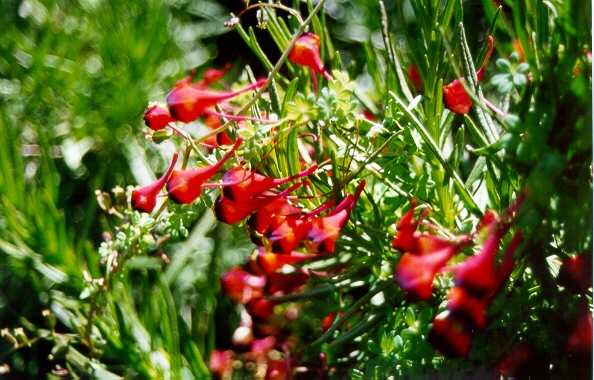 |
Tropaeolum tricolor ("Chupa-Chupa"-Suck suck) A little vine with small red flowers, which in spite of its name, does not seem to be a parasite nor dense enough to harm the plant on which it climbs. |
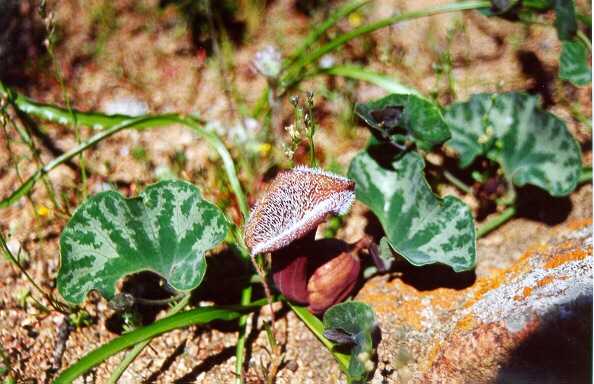 |
Aristolochia chilensis ("Oreja de Zorro") Not especially pretty, actually rather funny looking, but interesting nevertheless. |


